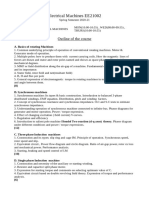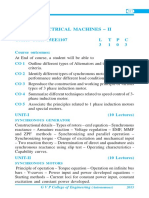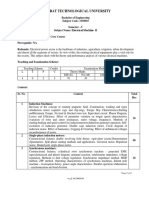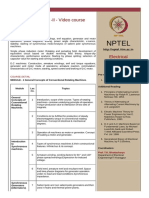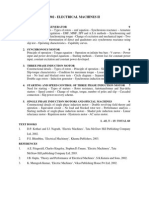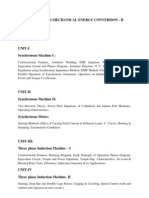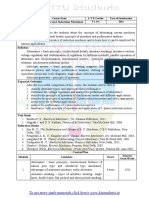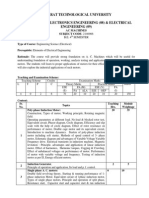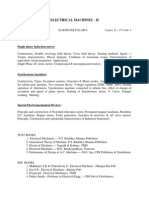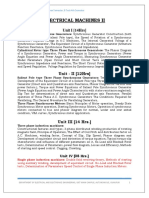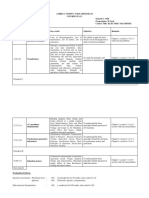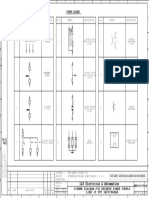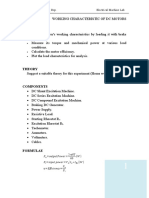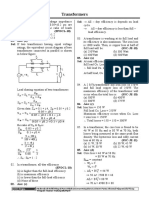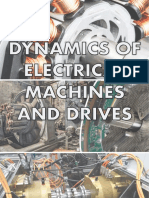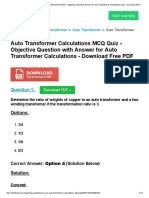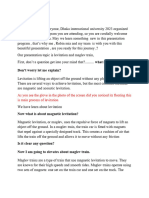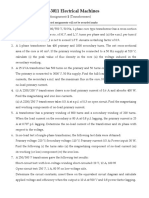0% found this document useful (0 votes)
28 views3 pagesLecture Notes of AC Machine
The document contains lecture notes for the AC Machines course (20A02402T) for II-B.Tech II-Semester students at Vemu Institute of Technology. It outlines course objectives, outcomes, and detailed units covering fundamentals, induction machines, synchronous generators, synchronous motors, and single-phase induction motors. Additionally, it lists textbooks and online resources for further learning.
Uploaded by
Sudhair BadshahCopyright
© © All Rights Reserved
We take content rights seriously. If you suspect this is your content, claim it here.
Available Formats
Download as PDF, TXT or read online on Scribd
0% found this document useful (0 votes)
28 views3 pagesLecture Notes of AC Machine
The document contains lecture notes for the AC Machines course (20A02402T) for II-B.Tech II-Semester students at Vemu Institute of Technology. It outlines course objectives, outcomes, and detailed units covering fundamentals, induction machines, synchronous generators, synchronous motors, and single-phase induction motors. Additionally, it lists textbooks and online resources for further learning.
Uploaded by
Sudhair BadshahCopyright
© © All Rights Reserved
We take content rights seriously. If you suspect this is your content, claim it here.
Available Formats
Download as PDF, TXT or read online on Scribd
/ 3







